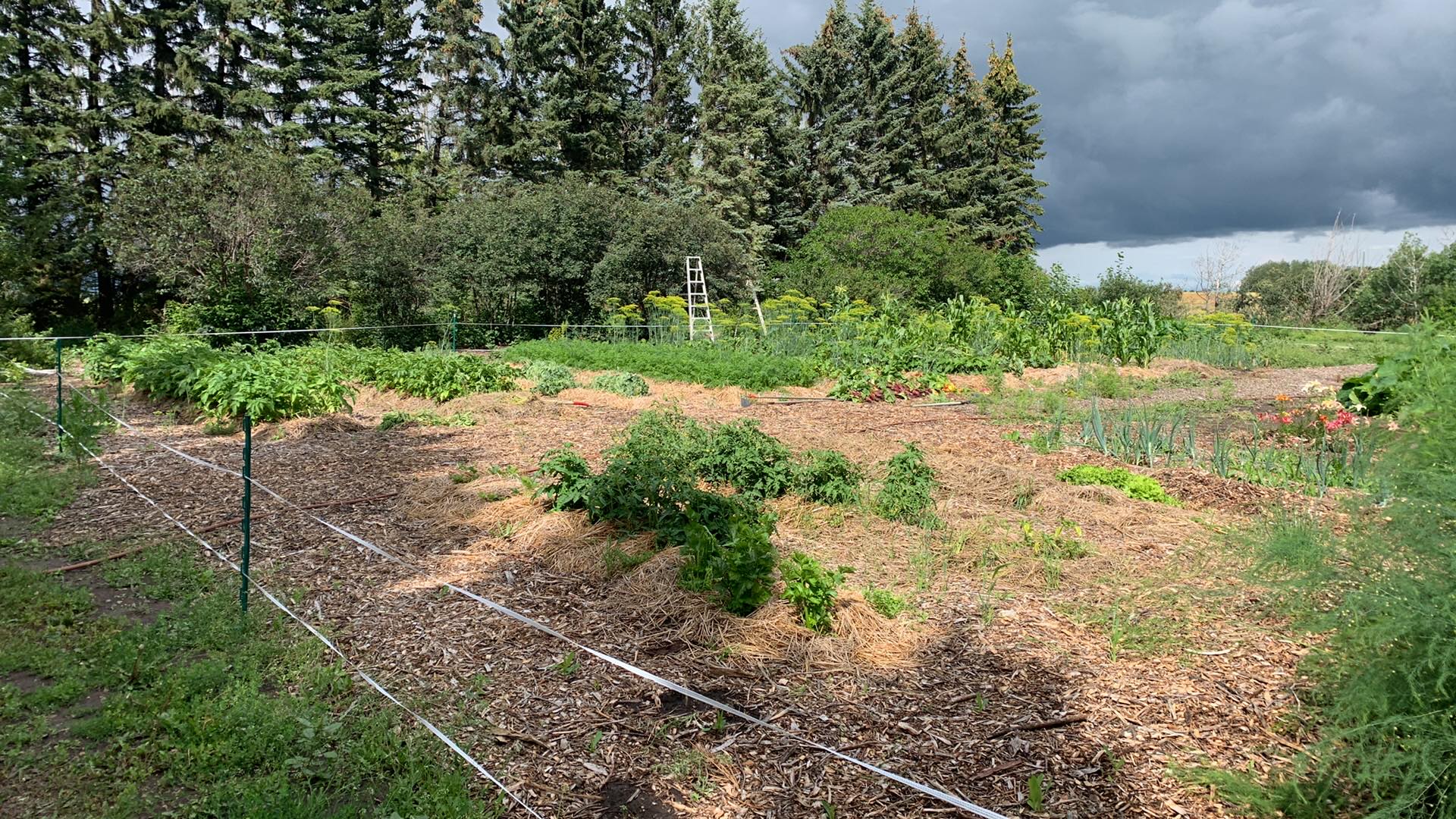
Creating a large no till garden
No till gardening is a system of gardening where the soil is mulched to prevent soil erosion, conserve water and reduce the pressure of weeds. No till gardening will reduce the physical work load of a large garden.
Large rural gardens benefit greatly from no till methods as the physical work load of maintain a large space is very time consuming. Weeding will be cut to minutes a week and watering will be much faster when the garden is working to conserve it’s own water.
Be sure to add a barrier space around the edge of your garden to prevent grass from creeping into your rows. A 4’ space is perfect as it gives a place for you to set buckets or park a garden tractor at the end of your rows.
If you have a garden tractor, make sure your pathways are wide enough to get it down. When plants are mature in size, the tractor won’t be able to straddle the rows anyways so it’s better to allow space to drive it down. This will make hauling mulch, compost or harvesting heavier vegetables like potatoes and pumpkins much easier if you have mechanical help. If you are concerned about space, consider leaving every other pathway wider, perhaps 4’ to allow for a larger tractor to get down.
When growing in larger gardens, lay out a rotation system and keep in mind that larger plants like corn will shade smaller plants. This can work in your favor if you plant onions, lettuce, radish or other cool season plants so they are shaded for a part of the day by the corn.
In a larger garden space, it is also easier to have separate sections dedicated to fruit trees versus vegetables versus perennial herbs. Fruit trees tend to sucker and can be troublesome in the larger garden space to keep them out. Growing them into no till rows that are not raised and mulching the pathways around them thickly will help with this. Fruit trees can also shade vegetable plants so try to plan accordingly.
Corn and squash family plants can cross pollinate so it’s best to include a plan in your rotation to separate them from each other and leave ample space to prevent cross pollination.
It is also important to remember distance to kitchen with a large garden if you do not have a tractor to help with hauling heavy vegetables in harvest season.

